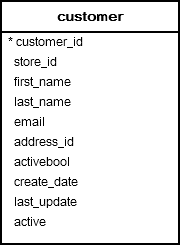PostgreSQL FORMAT() Function
Summary: in this tutorial, you will learn how to use the PostgreSQL FORMAT() function to format a string based on a template.
If you have experience with the C programming language, you’ll notice that the FORMAT() function is similar to the sprintf() function.
Introduction to PostgreSQL FORMAT() function
The FORMAT() function allows you to format strings based on a template.
Here’s the basic syntax of the FORMAT() function:
FORMAT(format_string, value1, value2, ...)In this syntax:
format_string: This is the input string that you want to format.value1,value2, …: These are values to be inserted into placeholders in theformat_string.
The FORMAT() function returns a formatted string.
The FORMAT() function can be useful for creating dynamic strings with placeholders for variables.
Format specifier
The following shows the syntax of the format specifier:
%[position][flags][width]typeA format specifier starts with % character and include three optional components position, flags, with and a required component type.
position
The position specifies which argument to be inserted in the result string. The position is in the form n$ where n is the argument index. The first argument starts from 1.
If you omit the position component, the default is the next argument in the list.
flags
The flags can accept a minus sign (-) that instructs the format specifier’s output to be left-justified.
The flags component only takes effect when the width field is specified.
width
The optional width field specifies the minimum number of characters to use for displaying the format specifier’s output.
The result string can be padded left or right with the spaces needed to fill the width.
If the width is too small, the output will be displayed as-is without any truncation.
The width can be one of the following values:
- A positive integer.
- An asterisk (*) to use the next function argument as the width.
- A string of the form
*n$to use thenthfunction argument as the width.
t**y**pe
type is the type of format conversion to use to produce the format specifier’s output.
The permitted values for type argument are as follows:
sformats the argument value as a string. NULL is treated as an empty string.Itreats the argument value as an SQL identifier.Lquotes the argument value as an SQL literal.
We often use I and L for constructing dynamic SQL statements.
If you want to include % in the result string, use double percentages %%
PostgreSQL FORMAT() function examples
Let’s explore some examples of using the FORMAT() function.
1) Basic PostgreSQL FORMAT() function example
The following statement uses the FORMAT() function to format a string:
SELECT FORMAT('Hello, %s','PostgreSQL');Output:
'Hello, PostgreSQL'In this example, the function replaces the %s with the 'PostgreSQL' string argument.
2) Using FORMAT() function with table data example
We’ll use the following customer table in the sample database.
 The following statement uses the
The following statement uses the FORMAT() function to construct customers’ full names from first names and last names:
SELECT
FORMAT('%s, %s',last_name, first_name) full_name
FROM
customer
ORDER BY
full_name;Output:
full_name
------------------------
Abney, Rafael
Adam, Nathaniel
Adams, Kathleen
Alexander, Diana
Allard, Gordon
Allen, Shirley
Alvarez, Charlene
...In this example, we used two format specifiers %s %s which are then replaced by values in the first_name and last_name columns.
3) Using FORMAT() function with the flags component
The following statement uses the FORMAT() function with the flags and with components in the format specifier:
SELECT FORMAT('|%10s|', 'one');The output string is left-padded with spaces and right-aligned.
format
--------------
| one|
(1 row)To make it left-aligned, you use – as the flag:
SELECT FORMAT('|%-10s|', 'one');The output is:
format
--------------
|one |
(1 row)4) Using FORMAT() function with the position component
This example uses the FORMAT() function with the position component of the format specifier:
SELECT
FORMAT('%1$s apple, %2$s orange, %1$s banana', 'small', 'big');The following illustrates the output:
format
---------------------------------------
small apple, big orange, small banana
(1 row)In this example, we have two arguments which are 'small' and 'big' strings.
The 1$ and 2$ positions instruct the FORMAT() function to inject the first ('small') and second arguments ('big') into the corresponding placeholders.
The 1$ appears twice in the format string, therefore, the first argument is also inserted twice.
Summary
- Use the PostgreSQL
FORMAT()function to format a string based on a template.